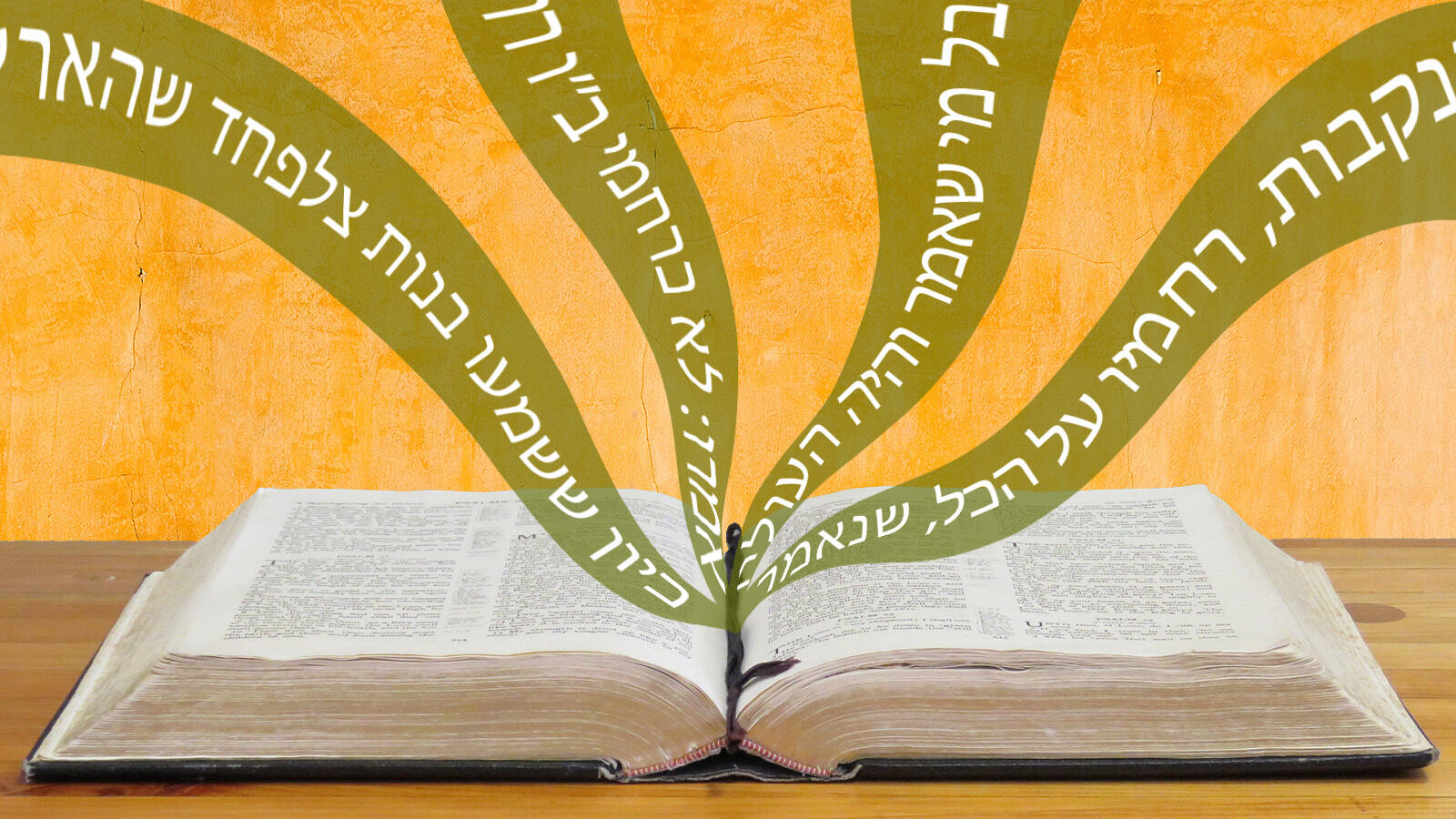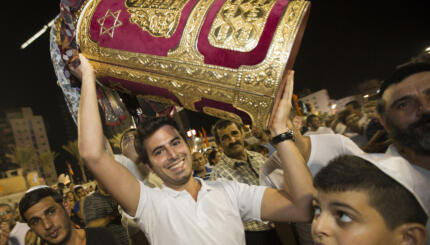Midrash (מדרשׁ) is an interpretive act, seeking the answers to religious questions (both practical and theological) by plumbing the meaning of the words of the Torah. (In the Bible, the root d-r-sh [דרשׁ] is used to mean inquiring into any matter, including occasionally to seek out God’s word.) Midrash responds to contemporary problems and crafts new stories, making connections between new Jewish realities and the unchanging biblical text.
Midrash falls into two categories.When the subject is law and religious practice (halacha), it is called midrash halacha. Midrash aggadah, on the other hand, interprets biblical narrative, exploring questions of ethics or theology, or creating homilies and parables based on the text. (Aggadah means”telling”; any midrash which is not halakhic falls into this category.)
Midrash Halacha
It is often difficult to determine, simply from reading the biblical text, what Jewish law would be in practice. The text of the Torah is often general or ambiguous when presenting laws. Midrash halacha attempts to clarify or extend a law beyond the conditions assumed in the Bible, and to make connections between current practice and the biblical text. It made possible the creation and acceptance of new liturgies and rituals which de facto replaced sacrificial worship after the fall of the Second Temple, and the maintenance of continuity by linking those practices to the words of the Torah.
Midrash halacha from the two centuries following the fall of the Temple was collected in three books — the Mekhilta on Exodus, the Sifra on Leviticus, and the Sifrei on Numbers and Deuteronomy — known as the tannaitic midrashim. (The tannaim were the rabbis from the time of the Mishnah, edited in approximately 200 C.E.)
Midrash Aggadah
The type of midrash most commonly referred to (as in, “There is a midrash which says…”) is from the collections of midrash aggadah, most of which were compiled between about 200 and 1000 C.E. (Many midrashim circulated orally before then). Midrash aggadah may begin its exploration with any word or verse in the Bible. There are many different methods of interpretation and exposition.
Written by rabbis both steeped in Bible and absorbed by the Jewish questions of their time, works of midrash aggadah often occupy the meeting ground between reverence and love for the wording of the fixed text of the Torah, and theological creativity. Midrashic writings thus often yield religious insights that have made Torah directly applicable to later Jewish realities, especially the concerns of its authors. Some of what midrash aggadah yields is insight into the burning, sometimes time-bound questions of those who wrote it. Still, the interpretations produced often have more universal and timeless application to our, or any, generation.
In addition to works devoted to midrashic compilations, midrash aggadah also appears throughout the two Talmuds. Midrash Rabbah, the “Great Midrash,” is the name of the collections linked to the five books of the Torah and the “Five Scrolls” (Esther, Song of Songs, Ruth, Lamentations, and Ecclesiastes) read on holidays. Some of these works read like verse-by-verse commentaries. Others may have originated in sermons linked to the weekly Torah reading.
Midrash
Pronounced: MIDD-rash, Origin: Hebrew, the process of interpretation by which the rabbis filled in “gaps” found in the Torah.
Torah
Pronunced: TORE-uh, Origin: Hebrew, the Five Books of Moses.
halacha
Pronounced: hah-lah-KHAH or huh-LUKH-uh, Origin: Hebrew, Jewish law.
Talmud
Pronounced: TALL-mud, Origin: Hebrew, the set of teachings and commentaries on the Torah that form the basis for Jewish law. Comprised of the Mishnah and the Gemara, it contains the opinions of thousands of rabbis from different periods in Jewish history.



